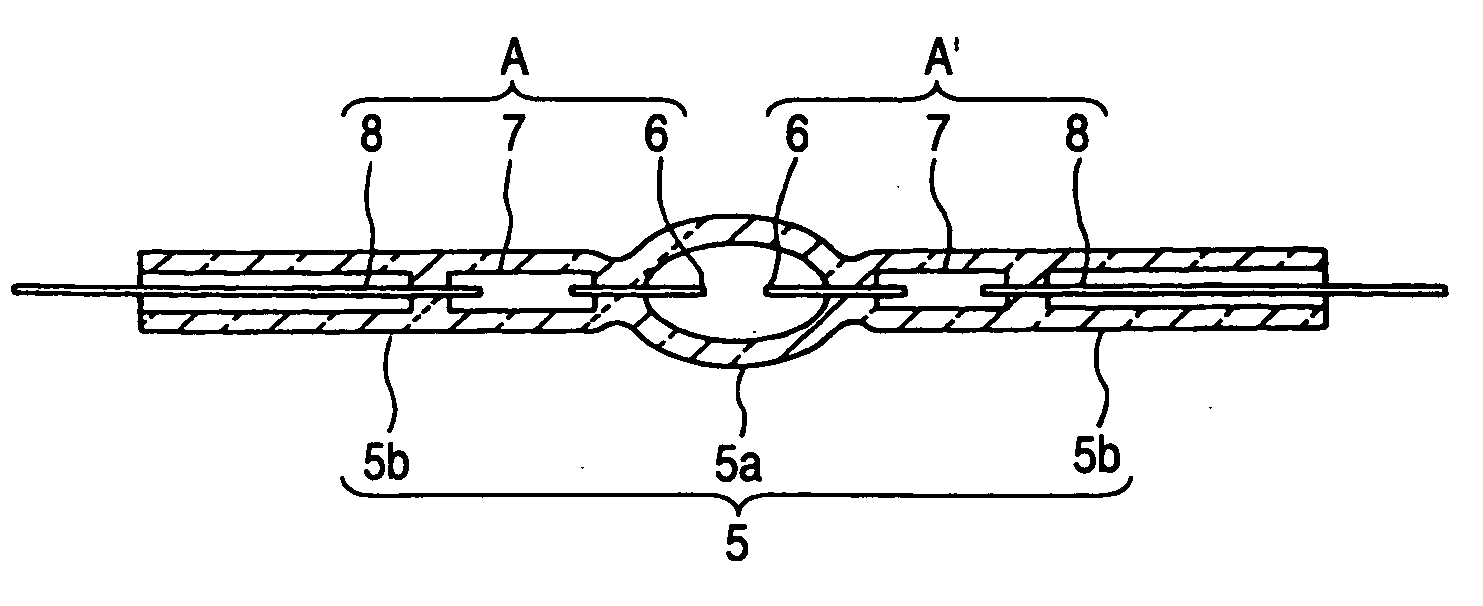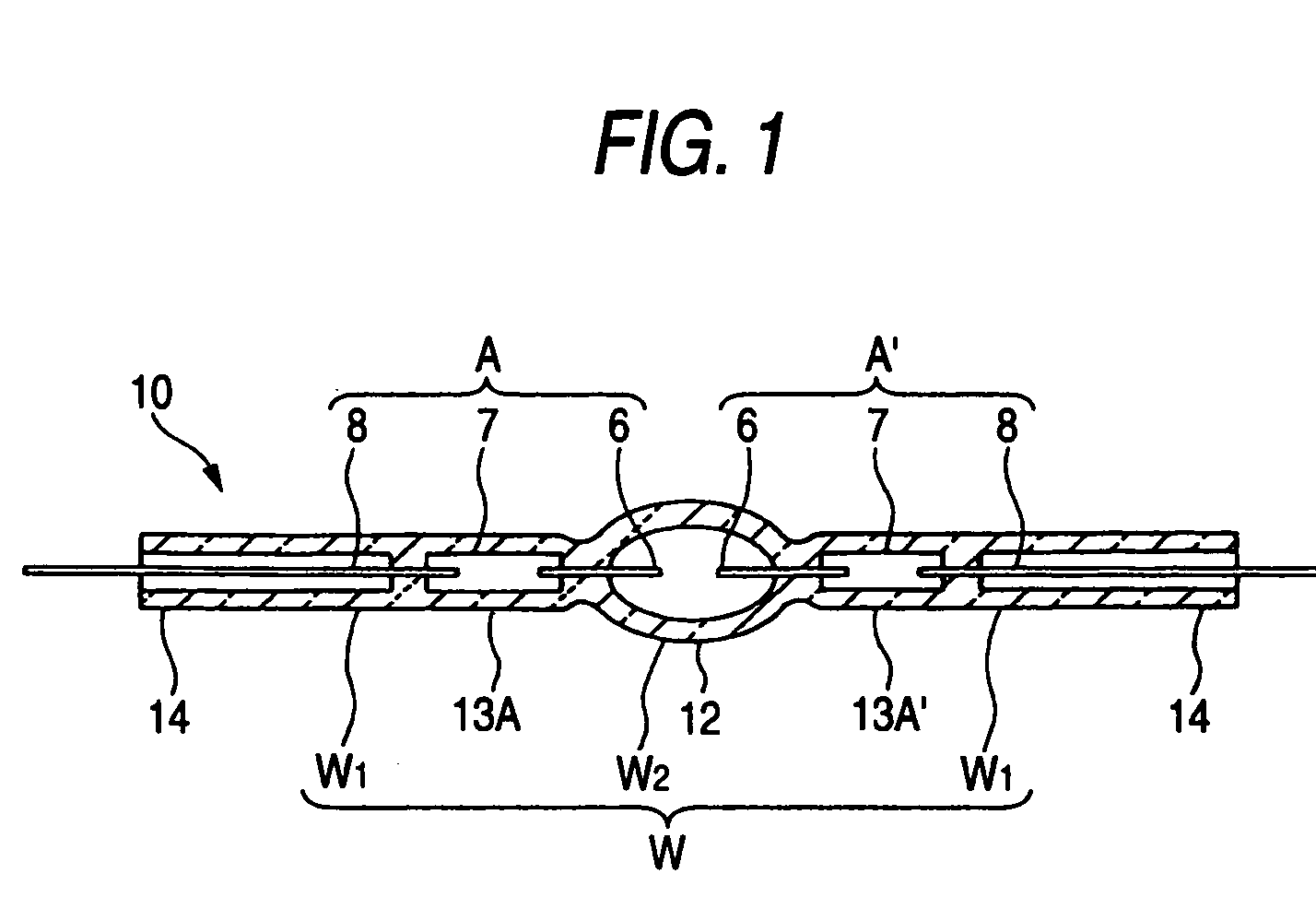[0016] The total weight of the substance (
metal halide) enclosed as the pellet P in the closed glass
bulb 5a is 0.3-0.4 mg at the most, while the weight of each electrode assembly A, A′ is about 75 mg (the total weight of the two assemblies is about 150 mg). Therefore, even if the pellet P and the electrode assembly A, A′ have the same
water content, the electrode assembly A, A′ is much larger in total quantity of water. Therefore, the inventors have thought that it is effective for prevention of the occurrence of
flicker to lessen the
water content of the electrode assembly A, A′.
[0018] The inventors have thought this reason as follows: though the
impurity (water and
oxide film) is removed from the electrode rod 6, the
molybdenum foil 7, and the lead wire 8 once by the
impurity (water and
oxide film) removing treatment performed on the parts level, when the electrode rod 6, the molybdenum foil 7, and the lead wire 8 are thereafter welded (joined) in the air to be integrally formed as the electrode assembly A, A′, the impurity (water and oxide film) is attached again to the electrode assembly A, A′, so that the occurrence of
flicker is promoted, or energy is used in excitation of the impurity, so that the
luminous flux lowers or the starting
voltage of the arc tube becomes high.
[0027] Since the electrode rod in the electrode assembly receives the impurity removing treatment twice, the quantity of the impurity (water and oxide film) attached to the electrode assembly is correspondingly small, and the quantity of water and gas as the impurity enclosed in the closed glass
bulb is correspondingly small. Therefore, this treatment is effective for prevention of the occurrence of flicker.
[0028] Particularly, in the electrode rod that has received the vacuum heat treatment at the high temperature of 1600-2200° C., not only the water and the oxide film that are attached on the surface of the electrode rod but also impurity (water and
foreign substance) inside the electrode rod can be removed. The higher this vacuum heat treatment temperature is, the higher the impurity (water and
foreign substance) removal effect is. However, simultaneously, coarsening of the
crystal progresses and the electrode rod becomes easy to bend. Therefore, it is desirable that the treatment temperature suited to the
diameter of the electrode rod is selected (for example, in the electrode rod having the
diameter of 0.25 mm, the treatment temperature is set to about 1600° C.).
[0030] Since the molybdenum foil in the electrode assembly receives the impurity removing treatment twice, the quantity of the impurity (water and oxide film) attached to the electrode assembly is correspondingly small, and the quantity of water and gas as the impurity enclosed in the closed glass bulb is correspondingly small. Therefore, this treatment is effective for prevention of the occurrence of flicker. Further, the oxidation /
reduction treatment applied to the molybdenum foil before being integrally formed as the electrode assembly works so as to increase
surface roughness of the molybdenum foil and increase
air tightness with the glass layer.
[0032] Since the molybdenum lead wire in the electrode assembly receives the impurity removing treatment twice, the quantity of the impurity (water and oxide film) attached to the electrode assembly is correspondingly small, and the quantity of water and gas as the impurity enclosed in the closed glass bulb is correspondingly small. Therefore, this treatment is effective for prevention of the occurrence of flicker.
 Login to View More
Login to View More  Login to View More
Login to View More 


